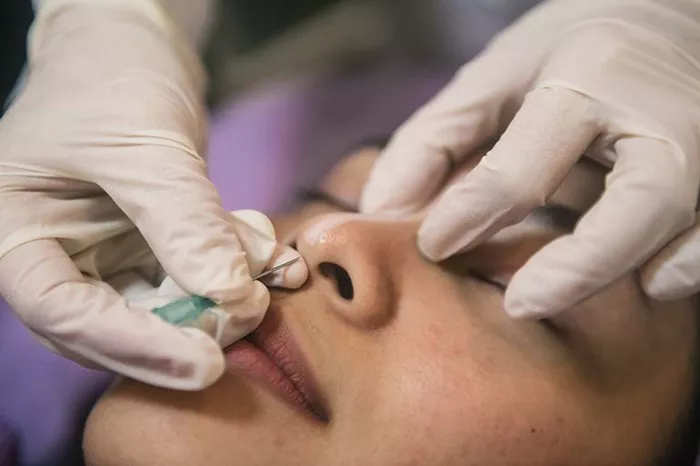Non-surgical rhinoplasty, also known as a non-surgical nose job or liquid rhinoplasty, is an increasingly popular cosmetic procedure worldwide. It offers a less invasive option for individuals looking to enhance the shape of their nose without undergoing traditional surgery. In the Philippines, this procedure has gained traction due to its affordability, safety, and minimal downtime. This article will explore the costs associated with non-surgical rhinoplasty in the Philippines, along with factors influencing the price and what potential patients can expect.
What is Non-Surgical Rhinoplasty?
Definition and Procedure Overview
Non-surgical rhinoplasty involves the use of injectable fillers to reshape the nose. This procedure is performed by a qualified medical professional and usually takes about 15 to 30 minutes.
Benefits of Non-Surgical Rhinoplasty
Minimal Downtime: Patients can return to their daily activities almost immediately.
Less Invasive: No incisions or anesthesia required.
Temporary Results: Allows patients to see the results before committing to permanent surgery.
Cost Factors of Non-Surgical Rhinoplasty in the Philippines
Type of Filler Used
Different fillers come at different costs. Common fillers include hyaluronic acid-based products like Juvederm and Restylane. The type of filler chosen will significantly impact the overall cost of the procedure.
Experience of the Practitioner
Highly experienced and reputable practitioners may charge more for their services. Their expertise ensures better results and reduces the risk of complications.
Location of the Clinic
Clinics located in metropolitan areas such as Manila or Cebu might have higher prices compared to those in smaller cities or rural areas.
Additional Services
Some clinics offer comprehensive packages that include consultations, follow-up appointments, and touch-up treatments, which can affect the overall cost.
Average Cost of Non-Surgical Rhinoplasty in the Philippines
Price Range
The cost of non-surgical rhinoplasty in the Philippines typically ranges from PHP 15,000 to PHP 40,000 per session. This variation depends on the factors mentioned earlier.
Breakdown of Costs
Filler Costs: PHP 10,000 to PHP 30,000
Practitioner Fees: PHP 5,000 to PHP 10,000
Additional Services: PHP 2,000 to PHP 5,000
Comparing Costs with Other Countries
Non-surgical rhinoplasty in the Philippines is generally more affordable compared to countries like the United States or the United Kingdom, where prices can range from PHP 50,000 to PHP 100,000.
Finding the Right Clinic and Practitioner
Research and Recommendations
It is crucial to do thorough research and seek recommendations from friends, family, or online reviews. Look for practitioners with positive feedback and proven track records.
Consultation Process
During the consultation, discuss your goals, expectations, and any concerns you may have. A good practitioner will provide clear information about the procedure, risks, and expected outcomes.
Certifications and Qualifications
Ensure that the practitioner is certified and has the necessary qualifications to perform non-surgical rhinoplasty. Membership in professional organizations like the Philippine Association of Plastic, Reconstructive, and Aesthetic Surgeons (PAPRAS) is a good indicator of credibility.
See also: How Long Does Non-Surgical Rhinoplasty Take?
What to Expect During and After the Procedure
The Procedure
The practitioner will clean the nose area and may apply a numbing cream. The filler is then injected into specific areas of the nose to achieve the desired shape.
Immediate Results and Recovery
Results are visible immediately after the procedure. Patients might experience slight swelling or bruising, which typically subsides within a few days.
Follow-Up Care
Follow-up appointments are essential to monitor the results and address any concerns. Some patients may require touch-up treatments to maintain the desired look.
Risks and Considerations
Potential Risks
Although non-surgical rhinoplasty is generally safe, there are potential risks such as:
Allergic Reactions: Rare but possible, depending on the type of filler used.
Infection: Can occur if the procedure is not performed in a sterile environment.
Asymmetry: Uneven results that may require additional treatments.
Longevity of Results
Results from non-surgical rhinoplasty are not permanent and typically last between 6 to 18 months, depending on the type of filler used and individual factors.
Suitability
Not everyone is a suitable candidate for non-surgical rhinoplasty. Individuals with certain medical conditions or those seeking significant changes to their nose may need to consider surgical options.
Conclusion
Non-surgical rhinoplasty offers a cost-effective and minimally invasive alternative to traditional rhinoplasty. In the Philippines, the cost varies depending on several factors, including the type of filler used, the practitioner’s experience, and the clinic’s location. By doing thorough research and choosing a qualified practitioner, patients can achieve their desired results safely and effectively.
For those considering this procedure, understanding the costs, benefits, and potential risks is crucial. With the right information and professional guidance, non-surgical rhinoplasty can be a satisfying and worthwhile investment in enhancing one’s appearance.
Related topics:
How Long Is Nose Numb After Rhinoplasty?
How Much Does Septorhinoplasty Cost With Insurance?
How To Make Your Nose Less Wide Naturally?


